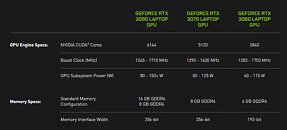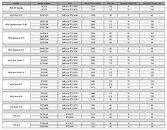
Acer Nitro AI Laptops Spotted with GeForce RTX 5050 Mobile GPU Specs
NVIDIA's oft-leaked GeForce RTX 5050 Mobile 8 GB GPU did not make a debut appearance at last week's Computex trade show. Given the very recent launch of GeForce RTX 5060 8 GB laptops, truly cost-conscious buyers will need to wait patiently for the next wave of even cheaper portable "Blackwell" hardware. Mid-way through the month, a British e-tailer inadvertently published pre-launch prices. Lenovo's least expensive option—utilizing a GeForce RTX 5050 Mobile card—sported a (likely placeholder) tag of £1149.97 (inc. VAT). So far, a lot of pre-release information has been sourced from official websites or webstores.
Yesterday, VideoCardz shared another NDA-buster—courtesy of Acer's "Predator and Nitro Gaming Laptop GPU Power Specifications page." At the time of writing, offending items are no longer present within this list. Prior to removal, three configurable Nitro AI laptop models (16, 16S, and 18) were visible with GeForce RTX 5050 specifications (alongside RTX 5060, 5070 and 5070 Ti options). Only clock speed and TGP data points were logged by the notorious investigator (see below). Currently, TechPowerUp's GPU database entry contains speculative information—a "GB207" GPU identifier was unearthed a while ago, but some insiders reckon that Team Green's GeForce RTX 5050 Mobile design will be based on "GB206" silicon. Additionally, debates continue to rage over the selection of GDDR7 or GDDR6 VRAM. So far, all launched tiers of NVIDIA's GeForce RTX 50-series have emerged with GDDR7 memory modules.
Yesterday, VideoCardz shared another NDA-buster—courtesy of Acer's "Predator and Nitro Gaming Laptop GPU Power Specifications page." At the time of writing, offending items are no longer present within this list. Prior to removal, three configurable Nitro AI laptop models (16, 16S, and 18) were visible with GeForce RTX 5050 specifications (alongside RTX 5060, 5070 and 5070 Ti options). Only clock speed and TGP data points were logged by the notorious investigator (see below). Currently, TechPowerUp's GPU database entry contains speculative information—a "GB207" GPU identifier was unearthed a while ago, but some insiders reckon that Team Green's GeForce RTX 5050 Mobile design will be based on "GB206" silicon. Additionally, debates continue to rage over the selection of GDDR7 or GDDR6 VRAM. So far, all launched tiers of NVIDIA's GeForce RTX 50-series have emerged with GDDR7 memory modules.









































































